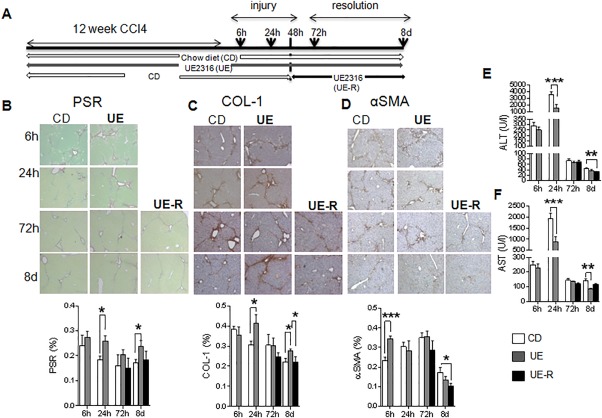Figure 8.

Inhibition of 11βHSD1 in mice enhances the early liver fibrotic response to CCl4 but, when restricted to the repair phase, improves resolution of scarring. (A) Schematic view of the experimental design. Mice were administered twice weekly intraperitoneal injections of CCl4 for 12 weeks and divided into three groups: a chow diet (white) group that was kept on vehicle diet for the duration of the experiment, a UE group (gray) that was kept on a diet containing the 11βHSD1 inhibitor UE2316 for the whole duration of the experiment, and a UE‐R group (black) that started on a vehicle chow diet and switched to the UE diet 48 hours after the last CCL4 injection. In this experiment a very early 6‐hour time point was included to capture the earliest injury response. Representative images and quantification graphs of PSR (B), Col1 (C), and αSMA (D) staining were quantified in 30‐40 continuous fields (×80) from each section of each group. Plasma levels of ALT (E) and AST (F) in mice treated with vehicle (white bars), UE (gray bars), or UE‐R (black bars). n = 5‐6 in each group; * P < 0.05, ** P < 0.01, *** P < 0.001 tested by two‐way analysis of variance. Abbreviation: CD, chow diet.
